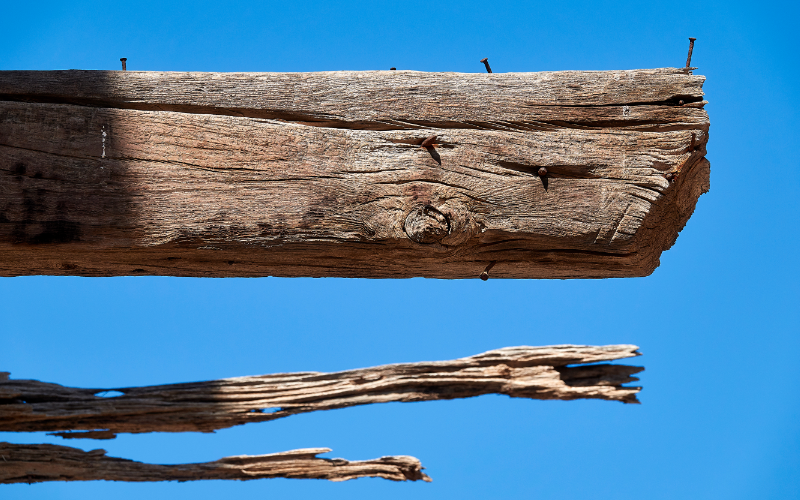Subterranean termites rank among the most harmful pests globally, and in Singapore, they represent a considerable risk to residential and commercial structures.
These insects flourish in warm and humid environments, rendering the city-state a perfect habitat for their proliferation. In contrast to other termite species that may inhabit above-ground areas, subterranean termites establish their colonies within the soil, complicating detection and management efforts.
Discover the reasons behind the threat posed by subterranean termites, the extent of the damage they inflict, and the most effective treatment strategies available in Singapore to address this hazard.
The Nature of Subterranean Termites
Subterranean termites are communal insects that inhabit extensive colonies beneath the ground. These colonies can contain hundreds of thousands, sometimes even millions, of termites. The colony has a structured hierarchy, with workers responsible for finding food and building tunnels, soldiers defending the nest, and a reproductive queen that ensures the colony’s growth.
What makes subterranean termites particularly dangerous is their mode of operation. They remain hidden underground, accessing buildings through mud tubes they construct. Once inside a structure, these termites feed on cellulose-containing materials such as wood, paper, and cardboard. Unlike other pests, subterranean termites often go unnoticed until significant damage has already occurred, making termite infestation one of the most adverse problems property owners can face.
Why Subterranean Termites Thrive in Singapore
Singapore’s tropical climate is highly conducive to termite infestation. The constant warmth and humidity allow subterranean termites to thrive year-round, unlike in temperate climates where colder weather can suppress termite activity. The country’s urban landscape, with its concrete, wood structures, and soil, offers numerous entry points for these termites. As a result, termite infestation in the city-state is not just typical but also widespread, affecting everything from residential properties to commercial buildings and even historic sites.
Moreover, the dense population in urban areas increases the risk of cross-infestation. Once subterranean termites infest one building, their network of underground tunnels can easily lead them to neighbouring properties. This interconnection makes it challenging to completely eradicate them without comprehensive termite treatment.
Destruction Caused by Subterranean Termites
The primary danger posed by subterranean termites is their ability to cause significant structural damage. These termites are relentless in their search for food, tunnelling through foundations, walls, beams, and other wooden components of buildings. Over time, this can compromise the structural integrity of a property, leading to expensive repairs and, in severe cases, unsafe living conditions.
What sets subterranean termites apart from other termite species is their extensive tunnelling system. Their underground colonies can extend far beyond the immediate vicinity of the infested building. This characteristic means that treating only the affected area is rarely sufficient. Without proper termite treatment in Singapore, termites can continue to cause damage even after initial infestations appear to be controlled. They may simply relocate to another part of the structure or the property and resume their destructive activities.
Signs of a Subterranean Termite Infestation
Identifying subterranean termite infestation early is critical to preventing extensive damage. However, these termites are experts at remaining concealed. Here are some common warning signs:
- Mud Tubes: Subterranean termites build protective mud tubes to travel between their colony and food sources. These tubes can be found along walls, foundations, or wooden structures.
- Hollowed Wood: As termites consume wood from the inside out, you may notice hollow-sounding wood when tapped.
- Damaged Structures: Drooping ceilings, sagging floors, or buckling walls are all signs of termite damage that has progressed significantly.
- Swarmers: Winged termites, or swarmers, emerge to establish new colonies. These are often the first visible signs of an infestation.
Acting quickly by contacting a professional for termite treatment is necessary if these signs are present.
Termite Treatment Options in Singapore
Given the aggressive nature of subterranean termites, termite treatment must be both efficient and thorough. There are several key options available for controlling and eliminating these pests:
- Chemical Barriers: One of the most common methods involves applying liquid termiticides around the perimeter of a building to create a chemical barrier that termites cannot cross. This method is effective but requires precise application to ensure total coverage.
- Termite Bait Systems: Termite bait is an increasingly popular option in the city-state due to its environmental friendliness and long-term effectiveness. Bait stations are placed around the property, attracting termites with a food source laced with a slow-acting poison. The workers take the bait back to the colony, where it spreads and eventually kills the entire colony.
- Fumigation: Fumigation may be necessary for severe infestations. This process involves sealing off a building and filling it with gas that penetrates all areas, killing termites within. While effective, this is usually a last resort due to its cost and the disruption it causes.
The Importance of Regular Inspections
Preventing termite infestation requires vigilance. Regular termite inspections are essential, especially for older buildings or those in high-risk areas. Professional pest control companies can detect early signs of subterranean termite activity before it escalates into a full-blown infestation. Regular inspections also allow for the timely application of preventive treatments, such as termite baits, to maintain a termite-free environment.
Conclusion
Subterranean termites are among the most dangerous pests in Singapore due to their ability to remain undetected and cause extensive damage. The city-state’s warm and humid climate provides an ideal habitat for these pests to flourish. Implementing early detection and thorough termite treatment strategies is then necessary to safeguard properties from this ongoing menace. Homeowners and businesses should employ chemical barriers, termite bait systems, and routine inspections to maintain vigilance, prevent expensive damage, and ensure a termite-free environment.
Visit Rentokil to protect your home from costly termite damage today!








